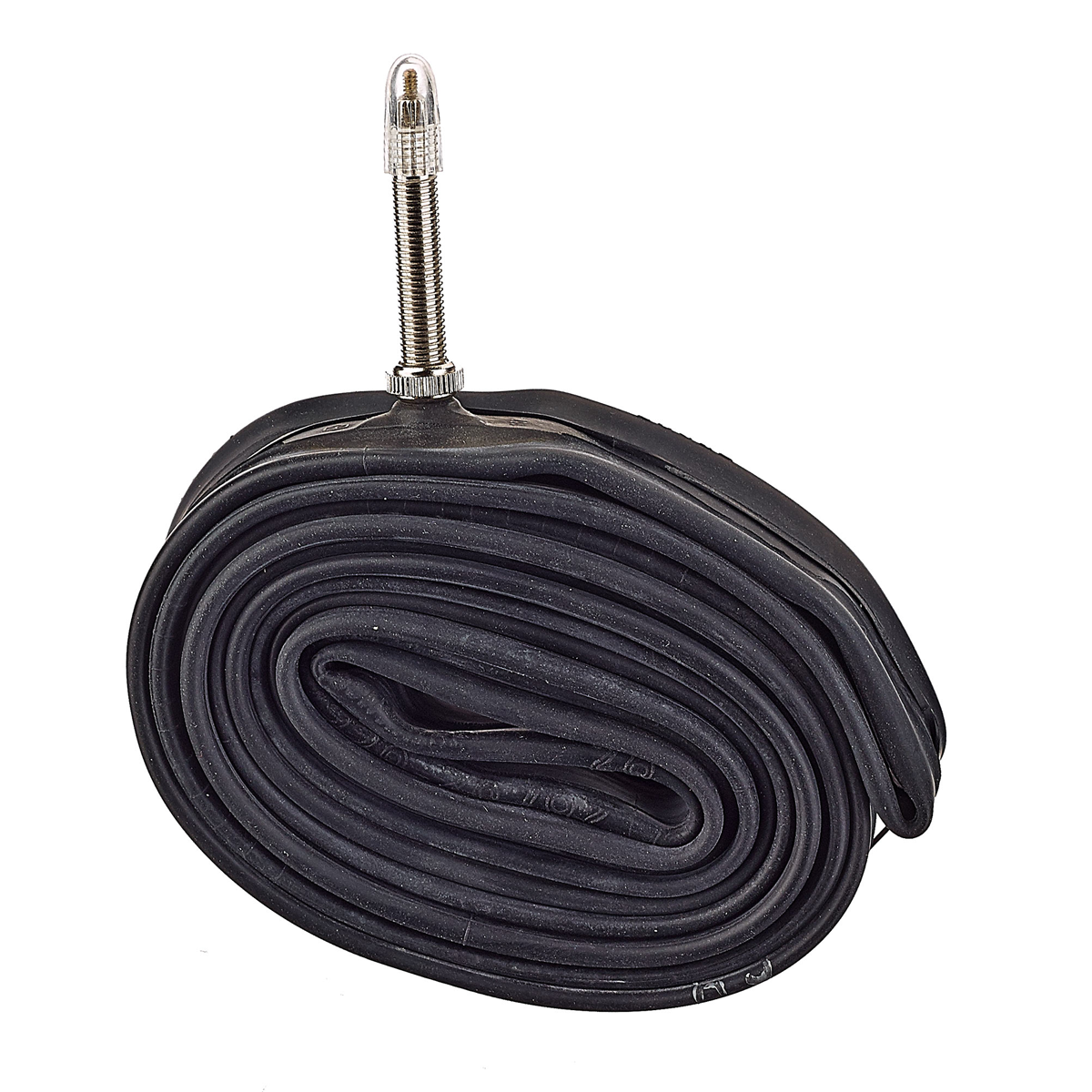Road Bike Tubes
Inner tubes for road bikes and triathlon bikes
Road and triathlon inner tubes
There are different tubes for different tyre sizes (diameters) and tyre widths. Tubes of triathlon and race bikes usually have a Sclaverand valve, because it fits best with its small diameter for the thin rims on these bikes. The valves are about 42 mm long, this requires a special attachment on your bicycle pump. The tubes are lightweight, they weigh between 50 and 90 grams.
Do you have questions about road bike tubes?
Classic butyl tubes weigh about 100 grams or more, while the light versions are already significantly lighter. Latex tubes reduce the weight even further and also improve rolling resistance. For maximum weight savings, however, you will have to reach a little deeper into your wallet for a thermoplastic tube. On top of that, you also get the best puncture protection.
| Butyl standard | approx. 105–130 g |
| Butyl light | approx. 50–75 g |
| Latex | approx. 70–85 g |
| Thermoplastic | approx. 35–40 g |
| Thermoplastic light | approx. 25 g |
* Values for 700C (28") road bike tubes in standard sizes (18-30 mm)
Latex tubes and thermoplastic tubes are good alternatives to butyl tubes, not just because of their low weight. Both materials score points with their more elastic material with better rolling behaviour; TPU is also considered to be more puncture-resistant. The pack size of the latex tube is slightly smaller, the TPU version even significantly smaller. However, the higher price (thermoplastic) or faster pressure loss (latex) makes the butyl road bike tube the first choice for many cyclists.
| Butyl | Latex | Thermoplastic | |
|---|---|---|---|
| Weight | - | + | ++ |
| Pack size | - | o | ++ |
| Puncture protection | o | + | ++ |
| Rolling resistance | - | ++ | ++ |
| Tightness | ++ | - | + |
| Installation | ++ | + | + |
| Repair | ++ | ++ | + |
| Price | ++ | + | - |
++ Outstanding / + Positive / o Neutral / - Negative
As the name suggests, butyl tubes with the suffix Light, Extra Light or Ultra Light (depending on the manufacturer) are weight-optimised road bike tubes with thinner walls. This has both advantages and disadvantages:
- + About half as light as normal butyl road bike tubes
- + Lower rolling resistance thanks to less material
- - More susceptible to punctures due to thinner walls
- - More sensitive to assembly mistakes
- - Higher pressure loss than standard butyl tubes
;BackgroundColor=ffffff)
;BackgroundColor=ffffff)